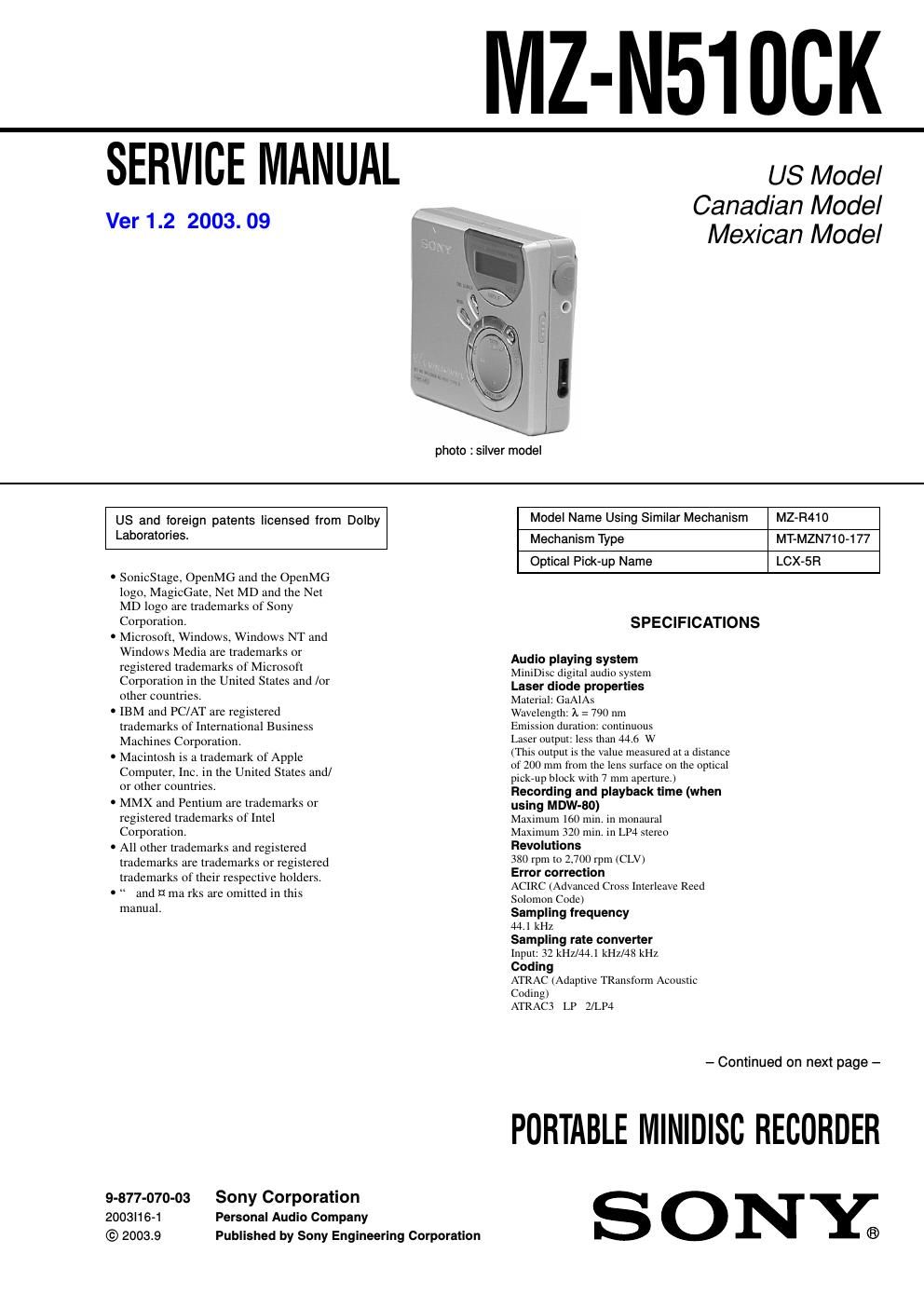Sony mz n 510 ck service manual
This is the 68 pages manual for sony mz n 510 ck service manual.
Read or download the pdf for free. If you want to contribute, please upload pdfs to audioservicemanuals.wetransfer.com.
Page: 1 / 68
